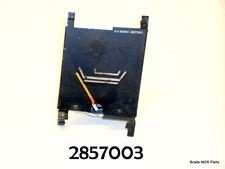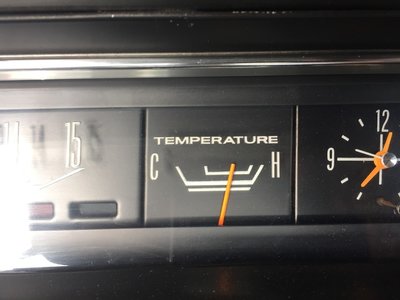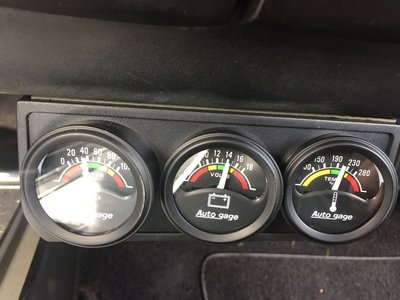69L48Z27
Well-Known Member
I've been chasing my tail a little bit with this one. Back story - 440 rebuilt over the winter with new 180 thermostat. Car was put back together and fired up, not a lot of miles but enough to shake it down. Temp gauge on the dash was perfectly vertical in the gauge. Looked normal.
Fast forward a bit... I had a small weeping issue around the water neck and hoses with original style clamps, heater hoses. I resealed the water neck at least 3 times and even swapped heater hoses. No luck so I did something I would never do, after reading some posts here it seemed like a lot you do this. I added a bottle of Bars Leak.
At the same time I also had the dash apart to clean it and address a few issues. The temp gauge was intermittent and the reason was the two nuts on the back were not even finger tight. Put it all back together and ran the Bars Leak in as the instructions state.
Also, radiator was out for cooking and pressure testing over the winter too. All good.
Now the gauge runs to the right of where it did before, right in the middle of the inside brackets.
Now I'm think I clogged the radiator with Bars Leaks. I guess my question is - Where on the gauge is normal?
Reference picture of the gauge:

Fast forward a bit... I had a small weeping issue around the water neck and hoses with original style clamps, heater hoses. I resealed the water neck at least 3 times and even swapped heater hoses. No luck so I did something I would never do, after reading some posts here it seemed like a lot you do this. I added a bottle of Bars Leak.
At the same time I also had the dash apart to clean it and address a few issues. The temp gauge was intermittent and the reason was the two nuts on the back were not even finger tight. Put it all back together and ran the Bars Leak in as the instructions state.
Also, radiator was out for cooking and pressure testing over the winter too. All good.
Now the gauge runs to the right of where it did before, right in the middle of the inside brackets.
Now I'm think I clogged the radiator with Bars Leaks. I guess my question is - Where on the gauge is normal?
Reference picture of the gauge:



















